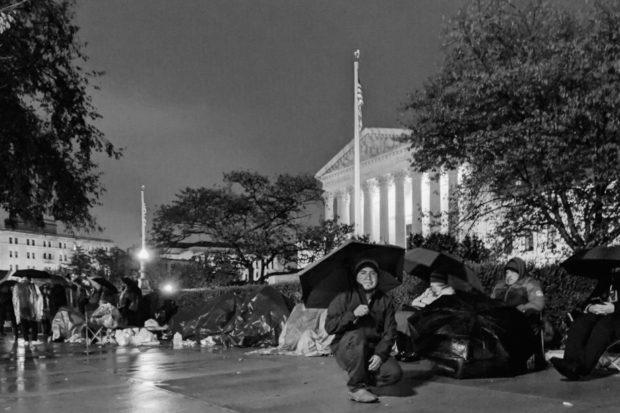
By Juan Santiago
The Dreamers’ movement reached a pivotal moment in November when the Supreme Court heard oral arguments over a Deferred Action for Childhood Arrivals (DACA) case. The case made it to the Supreme Court after almost three years of legal challenges in lower courts.
DACA is an immigration policy that allows some undocumented individuals, brought to the United States when they were children, to receive a renewable two-year period of deferred action from deportation and become eligible for a work permit. DACA doesn’t provide a path to citizenship, and it was implemented in 2012 by then President Barack Obama by an executive order.
DACA is an alternative to the Dream Act. The Dream Act (Development, Relief and Education for Alien Minors Act) was first introduced in the U.S. Senate in 2001. It was a proposal to give qualified individuals who entered the country as minors the opportunity to become residents. This bill failed to pass several times. Those who could benefit from the Dream Act were called Dreamers. DACA actually aimed to help the Dreamers.
The Trump administration rescinded DACA in 2017, leaving the lives of nearly 700,000 Dreamers in limbo. Since then, the administration action has been challenged in the courts and in the process USCIS (U.S. Citizenship and Immigration Services) has stopped accepting new applications and advance parole ended for DACA recipients.
Diego San Luis Ortega, a Dreamer from Tulare, and the author traveled to Washington, D.C, sponsored by the Pan Valley Institute of the American Friends Service Committee of Fresno in November to witness a historical day in the Dreamers’ movement and to bring awareness about the looming group that was left outside of DACA protection.
The legal questions before the Supreme Court centered on the political reasoning as to why and how the administration rescinded DACA. So the oral argument was not about the substance of DACA.
The plaintiffs argued that the administration reasoning to end DACA was not because DACA was illegal but instead because they don’t like to own the program. “This is not about the law,” echoed Justice Sonia Sotomayor. “This is about our choice to destroy lives.”
A decision is expected sometime in the spring of 2020. However, regardless of the Supreme Court’s decision on DACA the immigration debate remains complex and unsolved.
DACA did provide deportation relief and work permits to about 700,000 people. Those who benefited were able to become homeowners and business owners. Studies indicate that Dreamers have made tremendous contributions to the economy as a direct consequence of DACA implementation.
But this group of 700,000 is an exclusive group. Most undocumented people, including many young people, were left out by DACA, particularly indigenous migrant farmworker youth.
In the Central Valley, one of the factors that kept many young people from applying is that they did not meet the educational requirement. For the past two decades, the profile of the immigrants who come to the Central Valley has been primarily indigenous groups from southern Mexico. They come here to work as farmworkers.
Many do not speak Spanish but their own languages—such as Zapotec, Mixtec or Triqui—and some of the youth are the breadwinner of their family in Mexico so going to school is not an option for them.
Others arrived later in 2017, the threshold year for qualifying for DACA. This is the story of Petra Pacheco, a young indigenous Zapotec woman and mother of two who came here when she was 15 years old but has worked in the field since then so was left out by DACA’s requirement.
The Obama administration tried to broaden the DACA program to include the parents of the Dreamers, with an executive order known as Deferred Action for Parents of Americans and Lawful Permanent Residents (DAPA), but it was struck down by the courts.
According to officials from the University of California at a gathering in Washington, D.C,. the undocumented student community now on all the UC campuses combined is mainly non-DACA, and this represents a big challenge for the UC system. Non-DACA students don’t have work permits, and this limits the UC’s efforts to help them.
In Washington, D.C., we camped outside the Supreme Court to secure a seat inside the courtroom during the hearing day. The night before was cold and around 2 a.m. it began to rain, but being there to listen to the stories and to see how the Dreamers were organized was important for us.
Two key observations from this experience:
First, the Dreamers received notable support from major American tech companies such as Microsoft, which is a plaintiff; Microsoft sent its president and about 80 DACA Microsoft employees. Other important support came from the University of California; its president, Janet Napolitano, is also a plaintiff and sat on the front row inside the court.
Such support should not be taken for granted given the influence of these institutions in the U.S. economy and academia.
When the author was in high school, not even the counselor understood what it means to be without a Social Security number. Now, most Americans understand the challenges Dreamers face without such a number.
The second observation is about the new faces of Dreamers at the camp. One particular person is a grandmother Dreamer now. This symbolizes that although our lives are in limbo, we are continuing our lives despite the uncertainty.
The Supreme Court’s decision is uncertain, but regardless of the outcome the issue at stake remains unsolved for many including our siblings and parents.
*****
Juan Santiago is a Dreamer from Madera. He studied political science at Fresno State.
